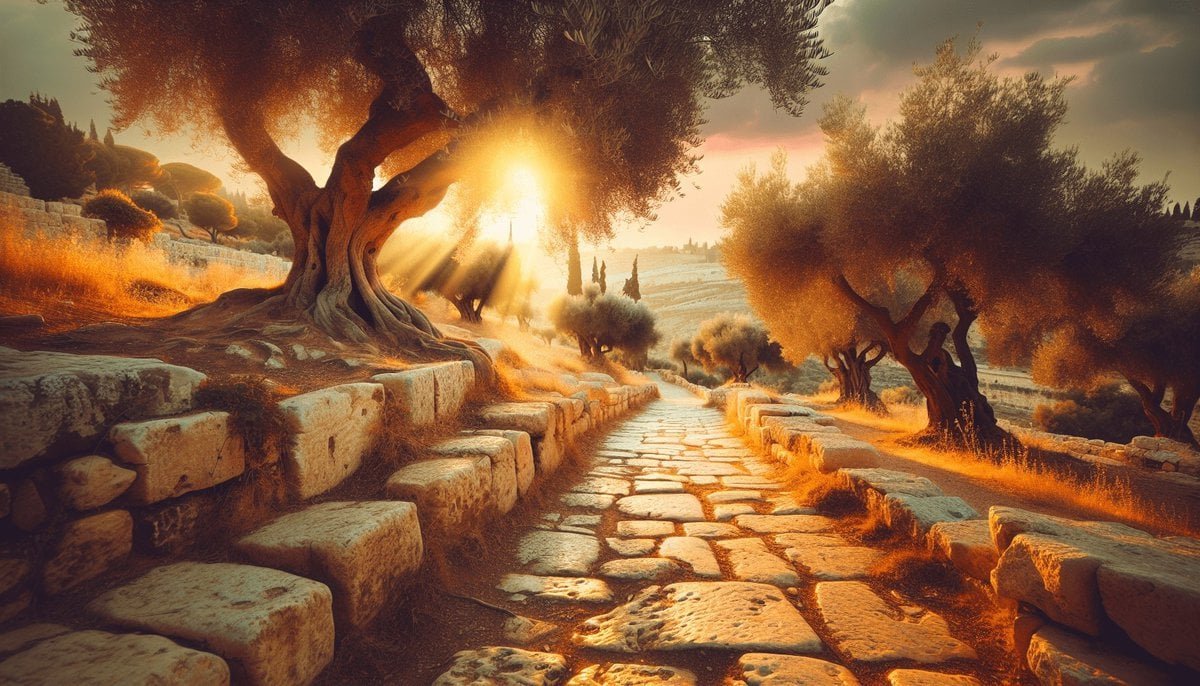Have you ever imagined walking in the footsteps of pilgrims who traversed the ancient city of Jerusalem thousands of years ago? In a world where modern life often overshadows the bustling progress of history, uncovering the ancient paths of Jerusalem that people once trod in search of spiritual fulfillment offers a captivating glimpse into the past. The city, with its profound religious significance, holds secrets waiting to be discovered beneath its surface. Recent archaeological excavations have unearthed fascinating details about these pilgrim routes—revealing the heart of a city consistently teeming with faith, history, and cultural intersection.
Introduction
Recent archaeological discoveries in Jerusalem have shed light on ancient pilgrim routes, offering both biblical enthusiasts and historians vital insights into how the city functioned as a key spiritual hub. This unfolding mystery underscores Jerusalem’s role as a crossroads for believers, showcasing routes that hold significant biblical references and historical weight. With every finding, the story of Jerusalem becomes more enriched, enhancing our comprehension of its complex past. This article aims to guide you through the historical context of these findings, analyze the archaeological evidence, and interpret their significance for both past and present understandings.
Discovery Context
Biblical Reference and Historical Background
Jerusalem’s mention in religious texts is both abundant and profound, as these routes likely served as the pathways for innumerable biblical figures. Within the realms of Abrahamic religions, Jerusalem constantly emerges as a pivotal stage for spiritual narratives. These routes are thought to connect to significant events, offering parallels to stories recorded in sacred scripts and further cementing Jerusalem’s symbolic importance.
Geographic Location
Located at the crossroads of ancient trade routes, Jerusalem has historically served as a central convergence point for diverse cultures and religions. Positioned on the plateau of the Judaean Mountains between the Mediterranean and the Dead Sea, it provided a strategic location that facilitated both commerce and pilgrimage. The rediscovered pathways lead us through the heart of this city’s ancient topography, enhancing our spatial awareness and understanding of historical travel and devotion.
Recent Findings
In recent years, archaeologists have employed cutting-edge technology to unveil pathways previously obscured by time and urbanization. Excavations have brought to light stone pavements and corridors, revealing structures believed to have supported the spiritual journeys of pilgrims. Detailed studies involving topographical scans and carbon dating have placed these routes within specific historical contexts, reconstructing the flow of ancient religious pilgrimages.
Archaeological Evidence
Specific Artifacts and Physical Descriptions
A trove of artifacts accompanies these paths—ranging from pottery fragments to ancient coins—that meticulously paint the life and times during their use. These material remnants not only serve as tangible links to the past but also provide crucial chronological benchmarks. The robust stone pavements, lined with remnants of ancient roadside niches, suggest facilities that once catered to the needs of travelers.
Dating Methods and Expert Interpretations
Scholars employ rigorous dating methods, including stratigraphy and radiocarbon dating, to ascertain the age of these routes and accompanying artifacts. The dates often correspond with known periods of heightened pilgrimage, such as the Second Temple period. Experts interpret these findings through both historical knowledge and comparative analysis with other ancient pathways, allowing for a rich interpretation of Jerusalem’s historical milieu.
Expert Insights
According to Dr. Rachel Lev, a leading archaeologist specializing in Middle Eastern antiquities, “These discoveries don’t merely fill gaps in our historical timelines but dramatically enhance our understanding of ancient societal dynamics and religious fervor.” Such expert narratives frame these findings within a broader scholarly context, elevating our collective insight into Jerusalem’s formative periods.
Significance
Biblical Implications
The routes offer a tangible connection to numerous biblical narratives, revitalizing texts with real-world correspondences. By walking in the footsteps of historical pilgrims, modern believers and scholars alike gain an enriched perspective of scriptural events, fostering a deeper appreciation for Jerusalem’s enduring religious resonance.
Historical Impact
Understanding the layout and function of these ancient pilgrim routes illuminates previously obscure aspects of Jerusalem’s history. These paths not only served religious purposes but also supported economic activity and cultural exchange. Their rediscovery helps rewrite parts of Jerusalem’s narrative, establishing the city not only as a spiritual epicenter but as a bustling node of ancient life.
Modern Understanding and Research Status
The implications of these findings reverberate into modernity, inviting interdisciplinary research and tourist interest. Engaging with these rediscovered paths challenges contemporary perceptions of historical spirituality, providing a template for future explorative projects in the city. Continued excavations are crucial, as they enhance both academic research and public engagement with Jerusalem’s rich heritage.
Conclusion
In summary, the ongoing excavation of ancient pilgrim routes in Jerusalem unveils a legacy interwoven with spiritual, economic, and cultural threads. As these pathways materialize from beneath the layers of time, they offer vital insight into a world where faith shaped cities and carved histories. The future of these discoveries promises to further illuminate the past, serving as a poignant reminder of Jerusalem’s timeless significance. As scholars and enthusiasts continue to examine these routes, the call to delve deeper into the annals of history becomes ever more resonant. Reflect on how these ancient footsteps incrementally build our understanding and appreciation of this magnificent city, now, and in times to come.
For further inquiry and exploration of analogous findings, consider visiting credible archaeological digital archives and international biblical historical societies.






